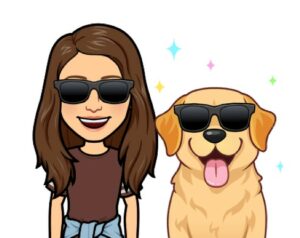Despite the unit we created not being based on the theory of Inquiry-based learning when I saw it was an option for this post I knew I had to write about it. I had the unique opportunity in the summer of 2019 to take a course with Rebecca Bathurst-Hunt, co-author of Inquiry Mindset, and learn all about her deep understanding of the process of inquiry and how she incorporates it into her Kindergarten classroom. I’ve been a fan ever since. If you don’t follow her Instagram @inquiryteacher I would highly recommend it. It is an incredible resource and she dutifully documents how she incorporates the process of inquiry into daily life with her kindies.
Here is a brief summary of the inquiry process according to Trevor Mackenzie and Rebecca Bathurst-Hunt’s. Inquiry is a student-driven process, lead by students’ natural curiosity. The teacher takes on the role of documenter, facilitator of opportunities, resource gatherer, and co-learner. In short, everybody goes on the journey of inquiry together. Inquiry starts with a question. There are many different ways to approach the creation of the question, mainly: teacher-created, co-created, and student-driven. The next step in Trevor and Rebecca’s inquiry process is the brainstorming and grouping of questions. When you complete this process you can guide students to focus on one topic altogether (students beginning inquiry) or create small groups based on interests that will work together throughout the inquiry process. Now the really exciting parts of the process start to happen. Teachers invent provocations to help students activate prior knowledge as well as come up with new wonderings. Provocations are often based on play and personal exploration such as natural materials, loose parts, or sensory materials but could also be books, videos, or anything else that teachers deem helpful. Students participate in research and record their findings and then it wraps up with a big celebration of learning or a fun way to show what you have learned. The entire process of inquiry is documented not just the final product which sets it apart from many other theories of learning. Rebecca shares her amazing celebrations of knowledge frequently on Instagram and they have ranged from a community project to give away glitter bottles at Christmas time (happiness inquiry) to an incredible covid friendly window museum (underwater inquiry) to an amazing bulletin board display (pet inquiry)
The learning resource we created does not align very well with the inquiry process. To be honest it would be quite difficult to create a comprehensive learning resource based on inquiry simply because so much of it hinges on the questions your students come up with and not over planning, allowing your students to drive the learning. However, the unit we created does contain a lot of aspects that could be considered borrowed from the Inquiry Process. For example the video provocations that take place at the end of lesson two and three have been chosen to encourage students to think about dance in a new way. The dance routine construction itself has a strong student choice component, allowing students to choose styles of dance, music, and moves that they desire. Therefore can be connected to inquiry in this way.
An amazing list of images surrounding the Inquiry Process
https://www.trevormackenzie.com/exclusive-sketchnotes/
MacKenzie, Trevor, and Rebecca Bathurst-Hunt. Inquiry Mindset: Nurturing the Dreams, Wonders, and Curiosities of Our Youngest Learners. Elevate Books Edu, 2019.

Leave a Reply